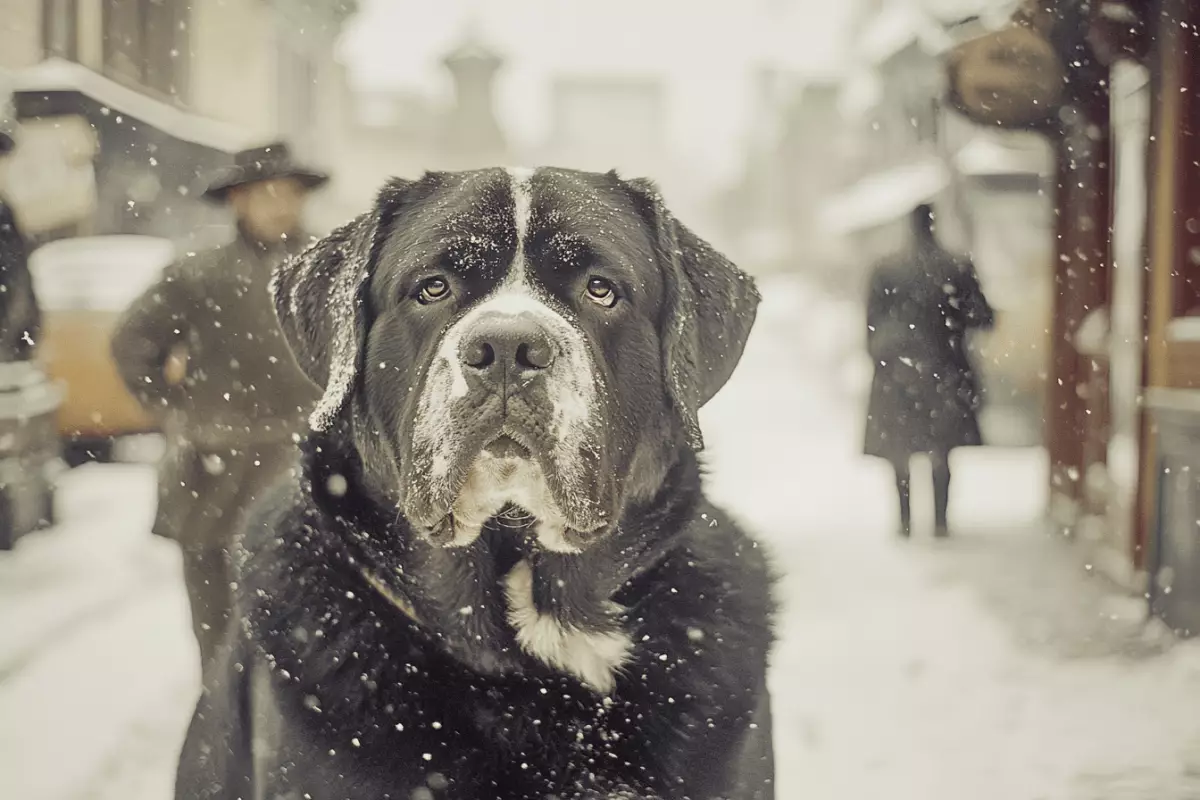As cities expand and modernize, the once-familiar canine companions that populated their streets have become mere shadows of the past. These dogs, which once served vital roles as guardians, companions, and workers, have largely vanished from urban life as the contours of society shifted. Changing lifestyles, evolving urban needs, and advancements in technology have rendered many breeds obsolete. The loss of these dogs is not merely sentimental; it reflects the profound transformations that have occurred in human society – shifts that have left these once-celebrated breeds relegated to the annals of history.
The extinction of certain dog breeds raises essential questions about what it means to coexist with animals in urban settings. As roles for dogs have changed, so too have our perceptions and connections with them. Breeds that were once icons of loyalty or strength have faded, leaving a gap in our collective memory of urban life.
The Russian Tracker Dog: A Lost Sentinel of Luxury Estates
Once revered for its majestic golden coat and unwavering loyalty, the Russian Tracker Dog was a staple in affluent neighborhoods, serving as a formidable guardian of properties. Its presence instilled a sense of security, much like that of modern watchful guard dogs. However, as cities embraced advancements in security technology and the appeal of smaller, more manageable breeds surged, the Russian Tracker Dog gradually disappeared. This breed’s fate exemplifies how technological progress impacts companion animals, illustrating that dogs once deemed essential can quickly become obsolete.
With urban landscapes evolving towards more sophisticated security systems, this magnificent breed serves as a reminder of the elegance and beauty that existed in city life before rapid modernization. The Russian Tracker Dog, now a relic, prompts us to reflect on what we’ve lost in our pursuit of convenience and efficiency.
The Alpine Mastiff: A Behemoth of Protection
In its prime, the Alpine Mastiff roamed urban settings as a formidable protector, exhibiting immense strength and vigilance. Bred primarily for guarding estates and businesses, this breed was not only a companion but also a critical element of city safety. However, as the need for giant working breeds subsided and smaller, more practical dogs gained popularity, the Alpine Mastiff faded into obscurity.
The disappearance of the Alpine Mastiff invites a reevaluation of our contemporary relationships with dogs. Are we prioritizing aesthetics and manageability over tradition and loyalty? By losing breeds like the Alpine Mastiff, we may sacrifice an essential part of our historical narrative, as these once-revered protectors are relegated to memory.
The Diminished Elegance of the Paisley Terrier
As a beloved lapdog of the aristocracy, the Paisley Terrier epitomized fashion and status in urban life. With its luxurious fur and gentle disposition, it was often seen in the arms of the elite. However, the rise of the Yorkshire Terrier redefined pet ownership trends, gradually overshadowing the Paisley and leading to its extinction. This transition speaks volumes about cultural shifts within canine companionship; it reflects changing societal preferences where smaller, trendier breeds dominate the narrative.
The story of the Paisley Terrier is a reminder of how swiftly popularity can alter the fates of once-vibrant breeds. For dog enthusiasts, the loss of the Paisley serves as an admonition: we must cherish and protect the diversity of breeds that contribute to the rich tapestry of canine culture.
The Tragic Fate of the Cordoba Fighting Dog
Hailing from Argentina, the Cordoba Fighting Dog was once a symbol of strength and tenacity in a world marred by cruelty and violence. It thrived in an era where dog fighting was normalized, earning recognition for its prowess in the ring. Yet, as society condemned such barbarity, the breed’s inherent aggressiveness led to its swift decline. This dog, now extinct, exemplifies a painful chapter in our interaction with animals – one fraught with moral dilemmas about purpose and companionship.
The Cordoba Fighting Dog’s legacy raises vital questions: can we honor the past while striving for ethical treatment of all species? Modern dog lovers must grapple with the consequences of history, acknowledging how certain breeds symbolize darker eras while promoting humane standards of care for existing breeds today.
Enduring Echoes of Urban Canine History
As we traverse modern cities, it’s crucial to remember the extinct breeds that once shared our environments. From the capable Old English Bulldog to the intrepid Tahltan Bear Dog, these canine companions enriched life, offering protection, companionship, and connection to the world. Their stories remind us of the dynamic relationship between urban progression and the vital roles dogs have historically played.
While our lifestyles evolve, and new breeds come into fashion, a responsibility lies in our hands: to ensure the legacy of these forgotten breeds endures—not merely as historical footnotes, but as poignant reminders of the rich tapestry of urban life and the integral role dogs have played within it. Their absence leaves not just sentimental gaps, but also valuable lessons about respect, connection, and the importance of remembering those who came before.

